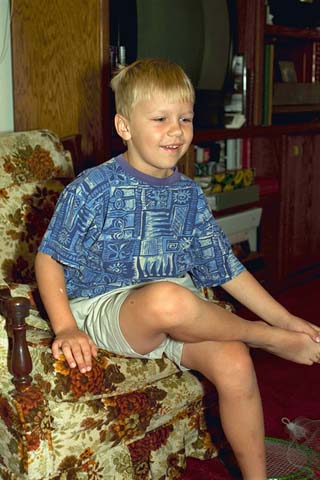
| _ Photo CD Home | Basics | Advanced | Software | Make Your Own | Links | email me! |

| Kodak Photo CD
|
Scanning is a task that is best performed by people. When a machine does the work there is always the risk of improper scan density, and improper framing of images with dark borders.
Even when people are involved, the complexity of the scanning task can sometimes get in the way. Selecting proper density for an image is not always intuitive. For negative film, selecting the proper film type in the scanning software is an extra step that might get overlooked. A lab that doesn't do a good job controlling dust will produce scans that need a lot of touching up.
In light of these problems, it is very important to select a lab that does good work. You can ask a lab whether they manually adjust the black and white point for each scan, but you won't really know how good they are until you try them. Even when you do, the person who did such a good job in the past might quit without any warning and the quality of scans might drop after they are gone.
Good photographers work very hard at achieving the perfect exposure for a subject. This often involves making a compromise between the dynamic range of a subject, and the dynamic range of the film. In dealing with a subject that has a wide dynamic range, the photographer must decide whether the shadows or the highlights are going to be sacrificed for the good of the image.
When scanning film, a similar decision must be made. Most scanners have a dynamic range that is wider than the range that appears in the final image file (be it PCD, TIFF, JPEG, or whatever). So the scanner operator must choose how much of the range of the film is recorded in the final image file. If too much is recorded, posterization can set in. If too little is recorded, the highlights or the shadows may be washed or blocked. You can't expect a scanner operator to know exactly what you intended with an image, so what you get might not be perfect. Having a machine make this decision will frequently lead to bad results. This is similar to the quality you expect from drugstore prints.
Scans of the same negative done by two different labs look very different when loaded into Photoshop. The scan from Kodak's lab looks washed out, while the scan from an independent lab looks fine. Here's a comparison of the way the two scans look in Photoshop:
 Kodak's Scan |  Independent Lab Scan |
The independent lab uses Kodak's CS1200 scanning system for the Mac, while Kodak uses a Sun UNIX-based Photo CD Imaging Workstation (PIW). It might be that the independent lab compensated for Photoshop's inability to load Photo CD images properly (see the Lost Highlights Problem) or that the CS1200 system shows something on the screen that is very different from what the PIW shows the scanner operator. Either way, you can see that the scan density from different service providers can vary widely. Note the difference in the black points. Kodak's scan has a very conservative black point (I find this to be typical for them). The independent lab's is more aggressive, but still reasonable.
A lab's equipment is also a factor in scan quality. Kodak's Photo CD imaging systems can work with a number of different Kodak scanners. The Film Scanner 2000 and the Film Scanner 6000 are the older "bottom end" scanners with restricted dynamic range. These are the ones the Kodak Lab uses and Kodak no longer makes them. The CS1200's scanner, and the Film Scanner 405x scanners are the better ones with more dynamic range and better quality. These are the only scanners still made by Kodak.
As with all things photographic, you'll need to experiment to find a lab that does a good job scanning film. Having someone else do your film scanning can save you a lot of time. Depending on your needs, it may be an option that is worth investigating.
<- Back to my Photo CD page.Disclaimers: These are simply random observations I've made while using Kodak's PhotoCD product. I am not affiliated with any of the companies mentioned in this page in any way other than as a customer. All trademarks are owned by their respective owners. There are no ads on this page, and there never will be. Use this information at your own risk. Perform your own experiments before committing to PhotoCD for any purpose. I won't be held responsible for anything that happens to you as a result of reading this. Shake well before serving. The contents of this page are Copyright 2000, with all rights reserved by me, Ted Felix.
Copyright ©2000, Ted Felix